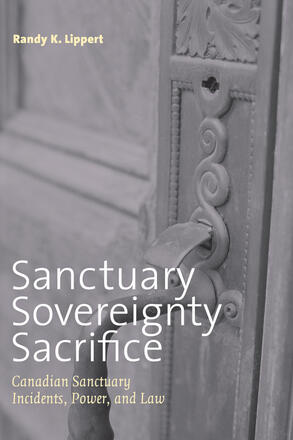
Sanctuary, Sovereignty, Sacrifice
Canadian Sanctuary Incidents, Power, and Law
Facing immediate deportation, a lone Guatemalan migrant entered sanctuary in a Montreal church in December 1983. Thus began the practice of sanctuary in Canada.
La description
Drawing on theories of governmentality, Lippert traces the emergence of sanctuary practice to a shift in responsibility for refugees and immigrants from the state to churches and communities. Here sanctuary practices and spaces are shaped by a form of pastoral power that targets needs and operates through sacrifice, and by a sovereign power that is exceptional, territorial, and spectacular. Correspondingly, law plays a complex role in sanctuary, appearing variously as a form of oppression, a game, and a source of majestic authority that overshadows the state. A thorough and original account of contemporary sanctuary practice, this book tackles theoretical and methodological questions in governmentality and socio-legal studies.
Reviews
Randy Lippert’s Sanctuary, Sovereignty and Sacrifice is an ambitious work that manages to successfully interrogate an empirical phenomena (sanctuary incidents) via a set of highly sophisticated theoretical concepts. Lippert’s sophisticated theoretical engagement and empirical investigation are intellectually fruitful and politically timely
- Amy Swiffen
The work is highly original, contributing to theory regarding governmentality, as well as to knowledge regarding Canadian sanctuary practices . .. Altogether, a fascinating and complex account.
- Susan Bibler Coutin, author of The Culture of Protest: Religious Activism and the U.S. Sanctuary Movement